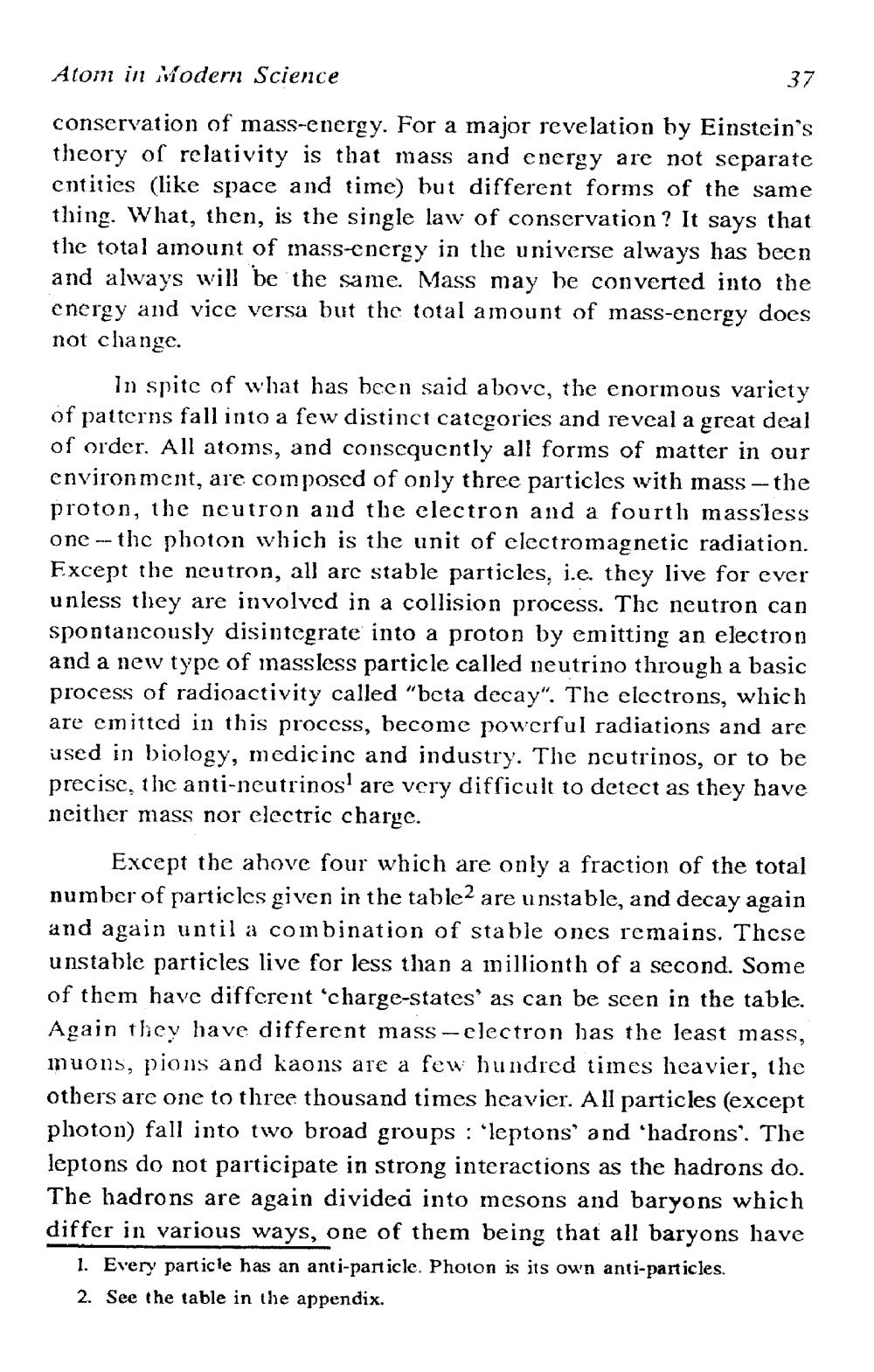________________
Atom in vodern Science
37
conservation of mass-energy. For a major revelation by Einstein's theory of relativity is that mass and energy are not separate entities (like space and time) but different forms of the same thing. What, then, is the single law of conservation ? It says that the total amount of mass-energy in the universe always has been and always will be the same. Mass may be converted into the energy and vice versa but the total amount of mass-energy does not change.
In spite of what has been said above, the enormous variety of patterns fall into a few distinct categories and reveal a great deal of order. All atoms, and consequently all forms of matter in our environment, are composed of only three particles with mass -- the proton, the ncutron and the electron and a fourth massless one -- the photon which is the unit of electromagnetic radiation. Except the neutron, all arc stable particles, i.e. they live for ever unless they are involved in a collision process. The neutron can spontaneously disintegrate into a proton by emitting an electron and a new type of inassless particle called neutrino through a basic process of radioactivity called "beta decay". The electrons, which are emitted in this process, become powerful radiations and are used in biology, medicine and industry. The neutrinos, or to be precise, the anti-neutrinos are very difficult to detect as they have neither mass nor electric charge.
Except the above four which are only a fraction of the total number of particles given in the table2 are unstable, and decay again and again until a combination of stable ones remains. These unstable particles live for less than a inillionth of a second. Some of them have different ‘charge-states' as can be seen in the table. Again they have different mass - electron has the least mass, inuons, pions and kaons are a few hundred times heavier, the others are one to three thousand times heavier. All particles (except photon) fall into two broad groups : ‘leptons' and 'hadrons'. The leptons do not participate in strong interactions as the hadrons do. The hadrons are again divided into mesons and baryons which differ in various ways, one of them being that all baryons have
1. Every particle has an anti-particle. Photon is its own anti-particles. 2. See the table in the appendix.




